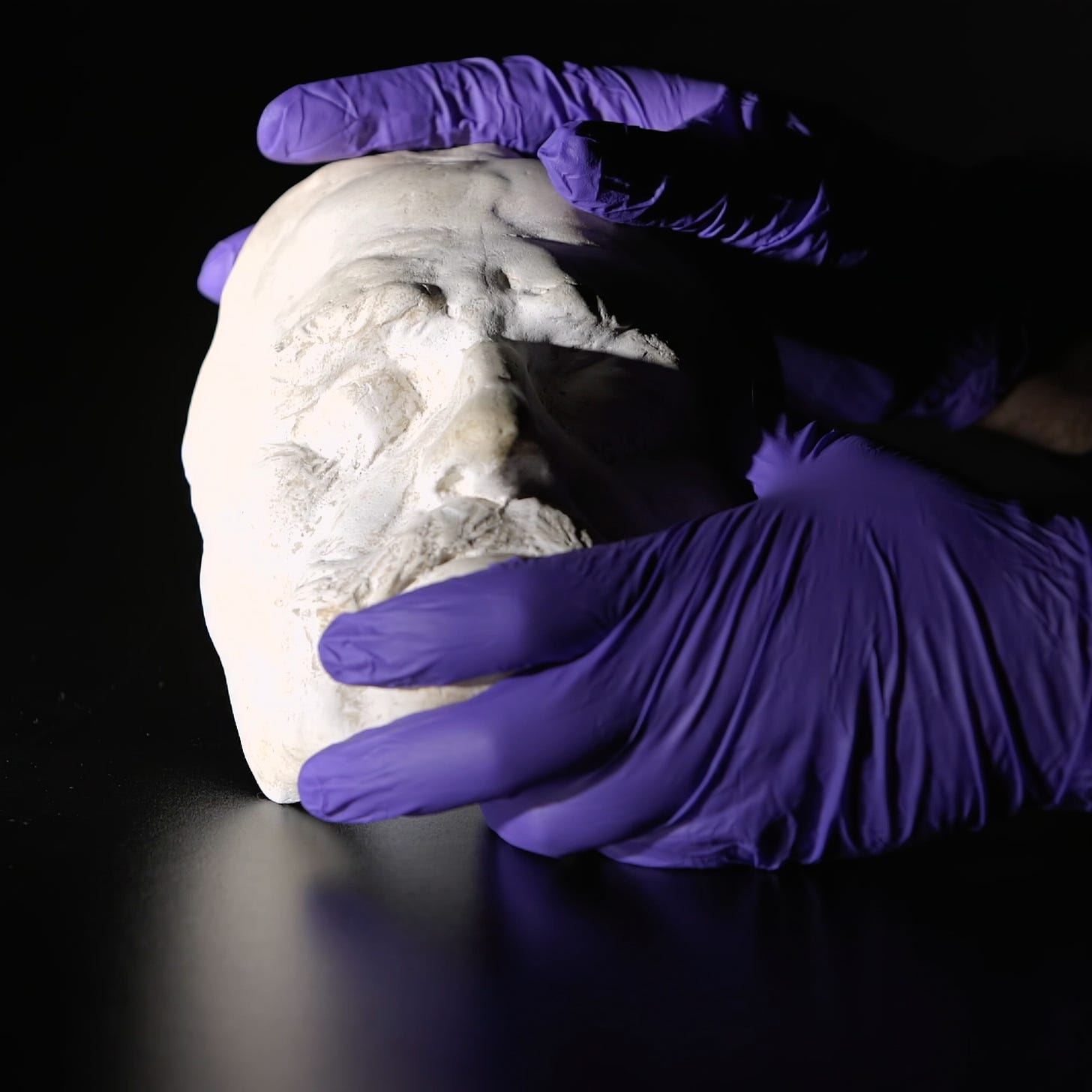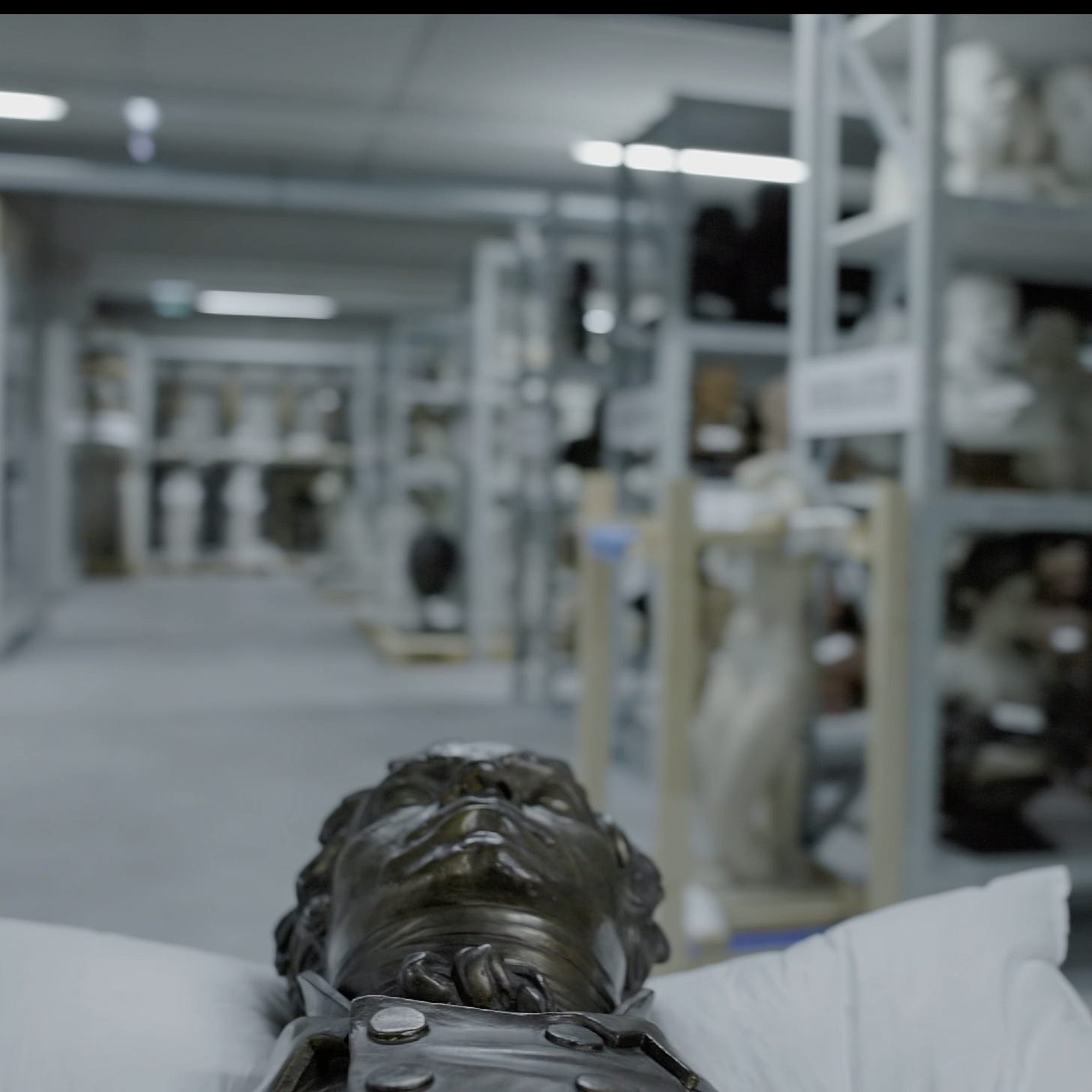Theft
A unique collaboration between the Jewish Museum Vienna and the Wien Museum packs and unpacks the Nazi history of expropriation and Aryanization
Servus!
Twice in recent months, I have found myself confronted with the administrative and logistical complexity of the Nazis’ crimes against humanity. The first was on a research trip to the former concentration camp Stutthof in what is today northern Poland, where the forest around the camp’s perimeter lies littered with fragments of victims’ shoes. Their presence is the legacy of a massive logistical operation involving multiple agencies by which shoes, having been stolen from concentration camp victims across occupied Poland, were collected and shipped to Stutthof for repair and repurpose, before the product of that forced labor was transported on to the Reich for the benefit of German citizens.
The second was in “Theft,” a new two-part exhibition on the Nazi process of expropriation and Aryanization in Vienna after 1938. The exhibition is a unique collaboration between the Jewish Museum Vienna and the Wien Museum. In the Jewish Museum, in a series of meticulously produced video installations, items expropriated from Jewish individuals and families—from works of art to paint boxes and sheet music—are carefully packaged and stored in crates. In the Wien Museum, those crates are then opened, the items unwrapped, and placed in the museum’s archives—their home at the end of the expropriation process.
Theft of Jewish property by the Municipal Collections—the precursor to today’s Wien Museum—was a multidirectional and, in the beginning, wild and uncontrolled process involving many avenues and institutions. Among the organizations involved in this robbery and embezzlement were the Vermögensverkehrsstelle, the Property Transaction Office, and the Vugesta, the Gestapo’s Office for the Disposal of the Property of Jewish Emigrants, as well as the City of Vienna, the Federal Monuments Office, and various auction houses including the Dorotheum. Auctions houses were one way the Municipal Collections acquired stolen property. Others included the Vugesta or direct acquisition at a knockdown price via extortion of Jews in distress.
The popular image of expropriation and Aryanization has been fixed by the 2015 movie Woman in Gold and the case of Gustav Klimt’s Portrait of Adele Bloch-Bauer I. “Theft,” however, shows the breadth and depth of the Nazis’ forced seizure of Jewish property. They not only took items of tremendous value such as property, art, and jewelry, but objects that were mass produced or could only have had negligible monetary and mostly sentimental value. Once institutionalized, Aryanization in Austria was intended to be thorough, total, and complete, forming part of the Nazis’ erasure of Jews as people worthy of human dignity. It is this totality—both in intent and in effect—and the centrality of Jewish persecution to the Nazi regime’s raison d'être that makes the Holocaust unique among the genocides of the twentieth century.
Such was the extent of the theft of Jewish property in Vienna that the process of undoing the Nazis’ crimes—to the extent that they can be undone—has taken and continues to last far longer than the life of the Third Reich. Seven years the Nazi regime stood in Austria; the Wien Museum has spent 25 years researching the provenance of the items in its collection to determine the extent of the looted objects that ended up in the Municipal Collections after 1938. Exhibited in “Theft” is but a fraction of what was stolen—and what could be given back.
“Theft” runs at the Jewish Museum Vienna and the Wien Museum until October 27.
Bis bald!
Thank you for subscribing to the Vienna Briefing. Every recommendation helps, so if you know someone who might be interested in reading this newsletter, consider sharing it with them today.
The Vienna Briefing is a reader-supported publication made possible by your donations. If you would like to contribute to my work, think about sending me a tip.
Who Goes To Brussels?
The government is split on the question of whom Austria will nominate to be its next European commissioner. While the People’s Party (ÖVP) favors finance minister Magnus Brunner and Europe minister Karoline Edtstadler, the Greens are said to want to nominate former first vice president of the European Parliament Othmar Karas.
Ukraine Abstention
Austria’s two Green MEPs abstained last week on a European Parliament resolution affirming the European Union’s support for Ukraine in its war against Russian aggression. The MEPs, Thomas Waitz and Lena Schilling, claimed the resolution contained passages that were incompatible with Austria’s permanent neutrality.
Far-Right March
Between 300 and 350 members of the far-right identitarian movement marched through the center of Vienna on Saturday, met by a counter-demonstration held by left-wing activists. 52 people were taken into custody as both demonstrations diverged from their pre-approved routes.





